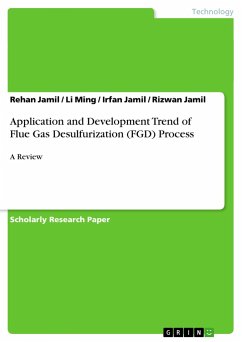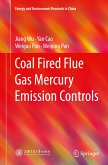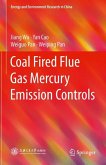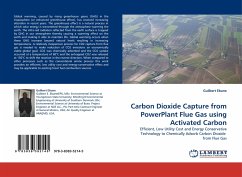Research Paper (undergraduate) from the year 2013 in the subject Engineering - Chemical Engineering, grade: Master, , course: Engineering, language: English, abstract: In 1927, the limestone desulfurization process was first applied in the Barthes and Bansside Power Plants (total120MW) beside the Thames River in UK to protect high-rise building in London. Up to now, over 10 desulfurization processeshave been launched and applied. Based on the desulfurizing agent being used, there include calcium process(limestone/lime), ammonia process, magnesium process, sodium process, alkali alumina process, copper oxide/zinc process,active carbon process, ammonium dihydrogen phosphate process, etc. The calcium process is commercially available andwidely used in the world, i.e. more than 90%. Flue gas desulfurization processes, survey made by the coal research instituteunder the International Energy Agency shows that the wet-process desulfurization accounts for 85% of total installedcapacity of flue gas desulfurization units across the world. The wet-process desulfurization is mainly applied in countries, likeJapan (98%), USA (92%), Germany (90%), etc. The limestone-gypsum wet desulfurization process, the most maturetechnology, the most applications, the most reliable operation in the world, may have rate of desulfurization of more than90%. Currently, the flue gas desulfurization technology used at thermal power plants at home and abroad tends to be higherrate of desulfurization, bigger installed capacity, more advanced technology, lower investment, less land acquisition, loweroperation cost, higher level of automation, more excellent reliability, etc. This paper briefs current situations and trends offlue gas desulfurization technology also append short descript of different type of FDG and their category.








